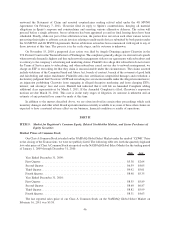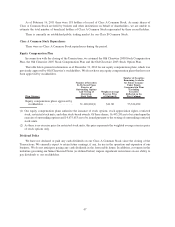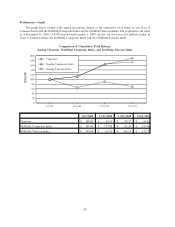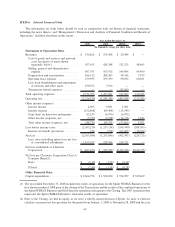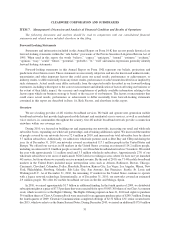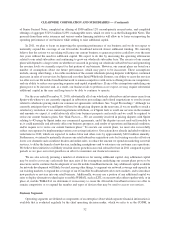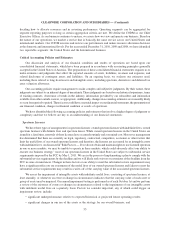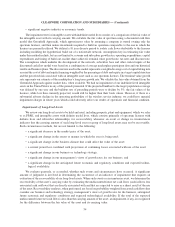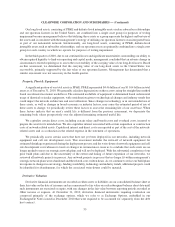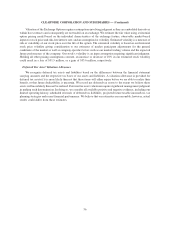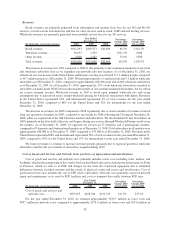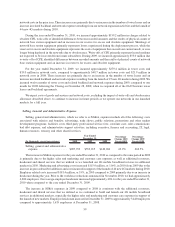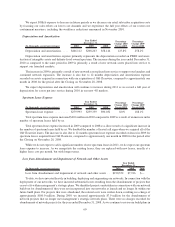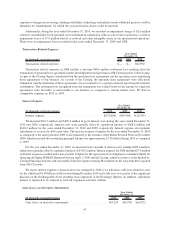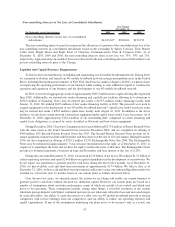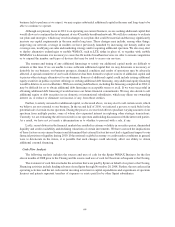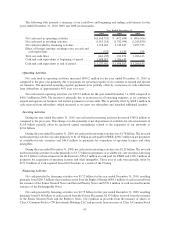Clearwire 2010 Annual Report Download - page 61
Download and view the complete annual report
Please find page 61 of the 2010 Clearwire annual report below. You can navigate through the pages in the report by either clicking on the pages listed below, or by using the keyword search tool below to find specific information within the annual report.Valuation of the Exchange Options requires assumptions involving judgment as they are embedded derivatives
within host contracts and consequently are not traded on an exchange. We estimate the fair value using a trinomial
option pricing model based on the individual characteristics of the exchange feature, observable market-based
inputs for stock price and risk-free interest rate, and an assumption for volatility. Estimated volatility is a measure of
risk or variability of our stock price over the life of the option. The estimated volatility is based on our historical
stock price volatility giving consideration to our estimates of market participant adjustments for the general
conditions of the market as well as company-specific factors such as our market trading volume and the expected
future performance of the company. Our stock’s volatility is an input assumption requiring significant judgment.
Holding all other pricing assumptions constant, an increase or decrease of 10% in our estimated stock volatility
could result in a loss of $51.5 million, or a gain of $53.6 million, respectively.
Deferred Tax Asset Valuation Allowance
We recognize deferred tax assets and liabilities based on the differences between the financial statement
carrying amounts and the respective tax bases of our assets and liabilities. A valuation allowance is provided for
deferred tax assets if it is more likely than not that these items will either expire before we are able to realize their
benefit, or that future deductibility is uncertain. We record net deferred tax assets to the extent we believe these
assets will more likely than not be realized. Deferred tax asset valuations require significant management judgment
in making such determination. In doing so, we consider all available positive and negative evidence, including our
limited operating history, scheduled reversals of deferred tax liabilities, projected future taxable income/loss, tax
planning strategies and recent financial performance. We believe that our estimates are reasonable; however, actual
results could differ from these estimates.
56
CLEARWIRE CORPORATION AND SUBSIDIARIES — (Continued)


